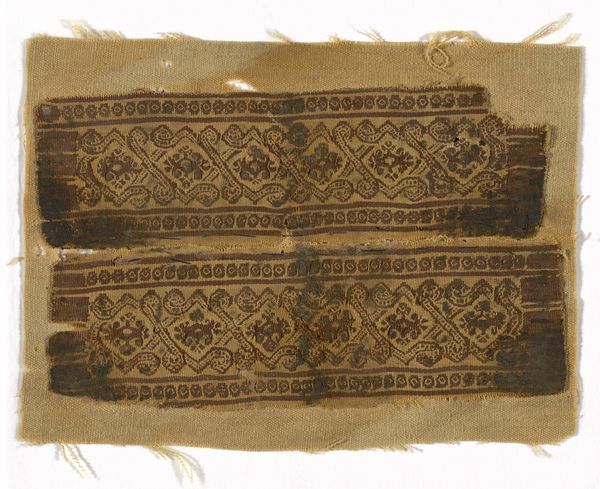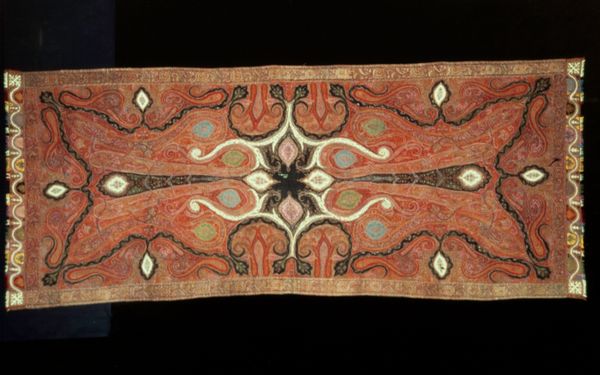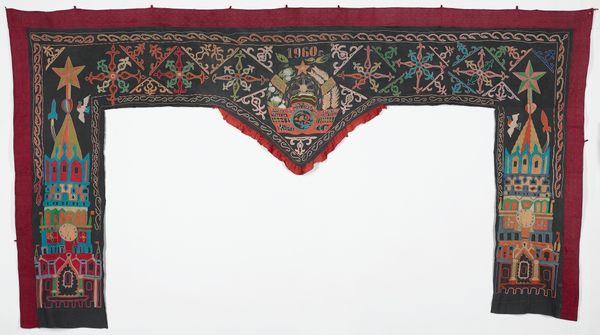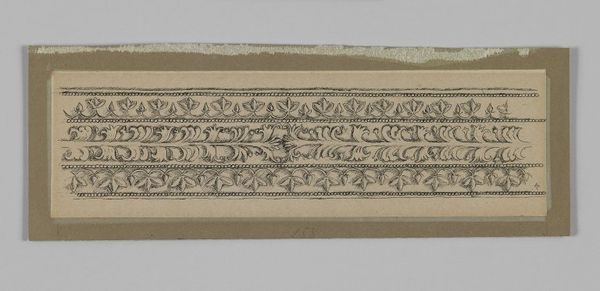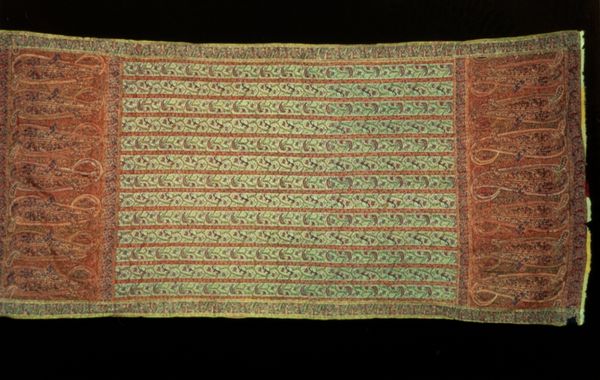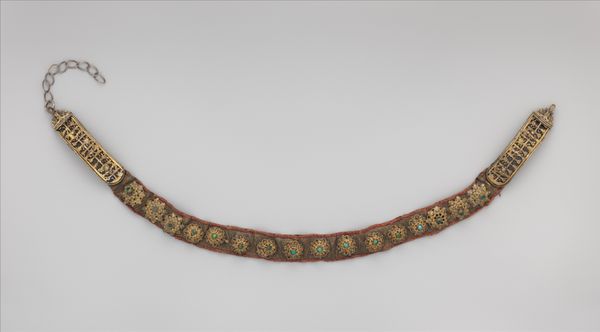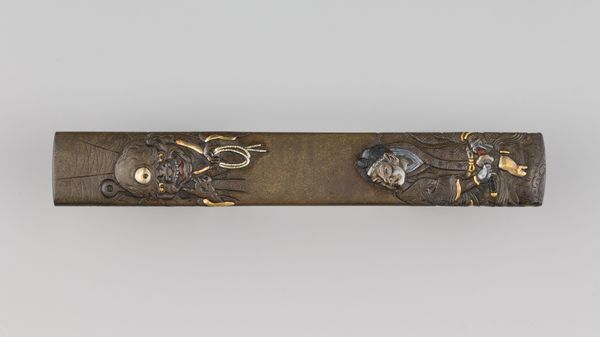
Boogvormig groteskentapijt met allegorische figuren met hoornen des overvloeds c. 1560
0:00
0:00
weaving, textile
#
allegory
#
weaving
#
textile
#
figuration
#
geometric pattern
#
11_renaissance
#
geometric
#
history-painting
#
trompe-l'oeil
#
decorative-art
Dimensions: height 57.0 cm, width 414.0 cm
Copyright: Rijks Museum: Open Domain
Editor: This impressive textile, "Boogvormig groteskentapijt met allegorische figuren met hoornen des overvloeds," or arched grotesque tapestry with allegorical figures and horns of plenty, was woven around 1560 by the Master of the Geometric Mark. It really strikes me with its ornamental detail and slightly unusual shape for a tapestry. What draws your eye when you look at this, and what kind of purpose would something like this serve? Curator: This is a wonderful example of Renaissance tapestry intended for display in elite homes. Its creation signals a culture of wealth, and equally, a culture steeped in humanism. Woven allegories such as this not only served a decorative function, but proclaimed the erudition of their owners and their engagement in a vibrant culture of imagery and humanist ideas. Tell me, what is your eye drawn to? Editor: I am intrigued by how it seems to be trying to create the illusion of three-dimensionality – almost like a stage. Were tapestries often used like this, almost as backdrops to suggest a certain type of lifestyle or political message? Curator: Precisely! These tapestries were very often commissioned to demonstrate an understanding of classical virtue or promote civic pride in an urban context. Think of them as mobile billboards of sorts – portable statements about the values of the household or community. And trompe-l’oeil, the 'fool the eye' effect you've noted, was a highly prized skill intended to evoke learned debate amongst elites. Editor: So, the patrons wanted to visually show their support for those concepts? Curator: Exactly. Displaying art was not simply about possession; it was about actively shaping social perceptions, and projecting specific ideologies. Did tapestries as “narrative billboards" primarily celebrate humanist virtue, or were patrons also interested in communicating faith in divine will? Editor: That’s fascinating to think about these objects playing such an important, very public, role. I never considered that aspect. Thanks for offering that insight. Curator: And thank you, this was a great way to explore the socio-political world in which this art work came to life.
Comments
No comments
Be the first to comment and join the conversation on the ultimate creative platform.

